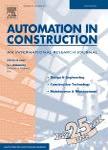版权所有:内蒙古大学图书馆 技术提供:维普资讯• 智图
内蒙古自治区呼和浩特市赛罕区大学西街235号 邮编: 010021

作者机构:Univ Alabama Dept Civil Construct & Environm Engn Tuscaloosa AL 35487 USA
出 版 物:《AUTOMATION IN CONSTRUCTION》 (建造自动化)
年 卷 期:2020年第120卷
页 面:103403-103403页
核心收录:
学科分类:08[工学] 0813[工学-建筑学] 0814[工学-土木工程]
基 金:Alabama Department of Transportation [930-930, 25663] Alabama Transportation Institute
主 题:Deep convolutional neural network Encoder-decoder networks Residual connection Range image Crack segmentation Pavement groove
摘 要:Recently, researchers have utilized DCNN for pixel-wise crack classification through semantic segmentation. Nevertheless, some issues in current DCNN-based roadway crack segmentation are yet to be fully addressed. For example, image pre-processing techniques are often required to eliminate the surface variations in range images, which may bring uncertainties due to subjective parameter selection;besides, disturbances from many non-crack patterns such as pavement grooves can deteriorate the crack segmentation performance, which remains a challenge for current DCNN-based methodologies. This paper proposes a methodology based on encoder-decoder networks to achieve pixel-wise crack classification performance on laser-scanned range images, under the disturbance of surface variations and grooved patterns in concrete pavements. The raw range data is directly applied in this methodology without any pre-processing. A comparative study is performed to determine the optimal architecture layout among twelve proposed candidates. Meanwhile, the influence of residual connections on DCNN performance is investigated and demonstrated.